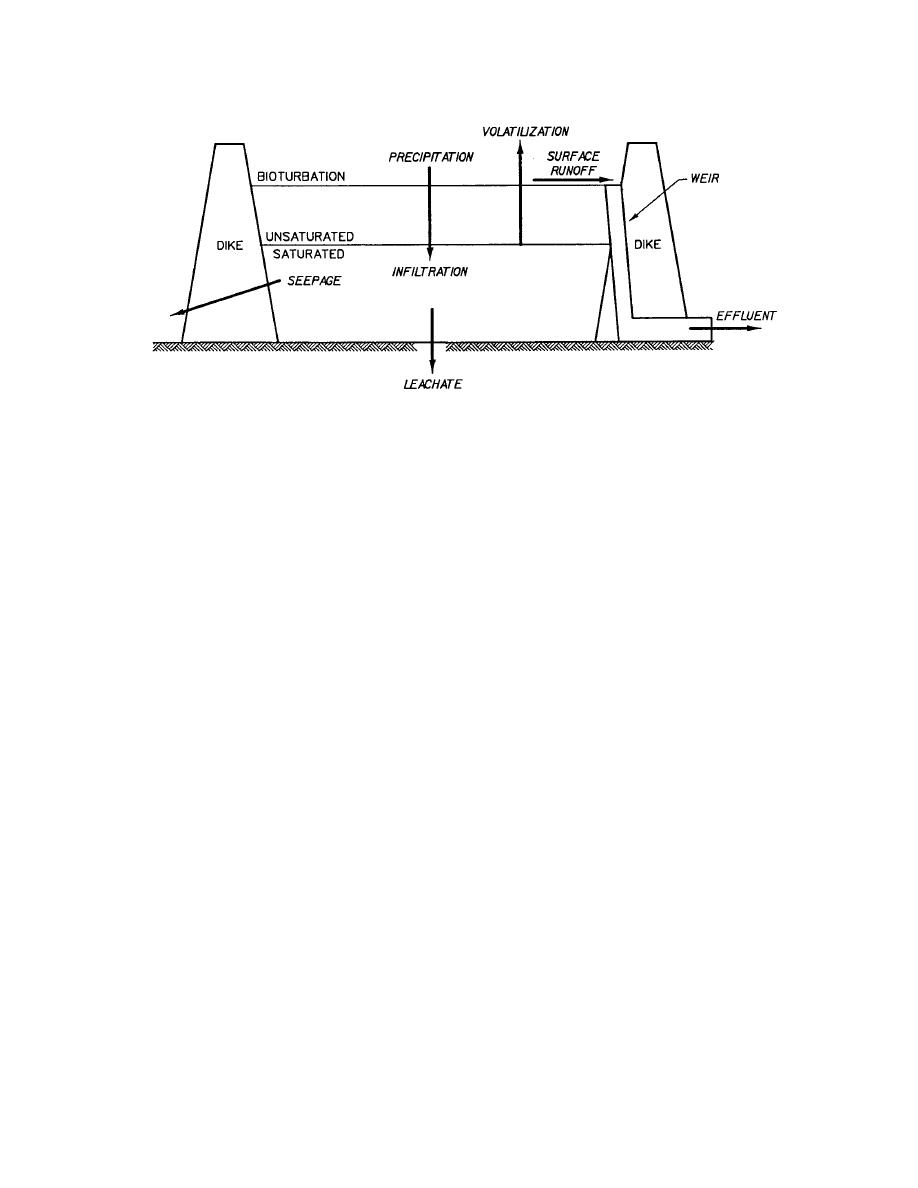 |
||
|
|
||
|
Page Title:
Figure 5-1. Contaminant Pathways for Upland CDFs |
||
| |||||||||||||||
|
|
 Framework for Dredged Material Management
May 2004
Figure 5-1. Contaminant Pathways for Upland CDFs
association with the dredged material. Effects on surface water quality, groundwater
quality, air quality, plants, and animals depend on the characteristics of the dredged
material, management and operation of the site during and after filling, and the proximity
of the CDF to potential receptors of the contaminants.
Migration pathways affected by nearshore CDFs are illustrated in Figure 5-2 and
include all of the pathways previously discussed. Additional considerations for nearshore
sites (with one or more sides within the influence of water level fluctuations) are soluble
convection through the dike in the partially saturated zone and soluble diffusion from the
saturated zone through the dike. Groundwater seepage into or through the site can also be
a factor affecting contaminant migration. These additional potential fluxes primarily
affect the surface water pathway.
5.3.2 Geochemical Environments for CDFs
When dredged material is placed in an upland environment, physical and/or
chemical changes may occur (Francingues et al. 1985). The dredged material initially is
dark in color and reduced, with little oxygen. If the material is hydraulically placed in the
CDF, the ponded water will usually become oxygenated. This may affect the release of
contaminants in effluent discharged during hydraulic filling.
Once disposal operations are completed, and any ponded water has been removed
from the surface of the CDF, the exposed dredged material will become oxidized and
lighter in color. The dredged material may begin to crack as it dries out. Accumulation of
salts will develop on the surface of the dredged material and especially on the edge of the
cracks. Rainfall events will tend to dissolve and remove these salt accumulations in
surface runoff. Certain metal contaminants may become dissolved in surface runoff.
39
|
|
Privacy Statement - Press Release - Copyright Information. - Contact Us - Support Integrated Publishing |